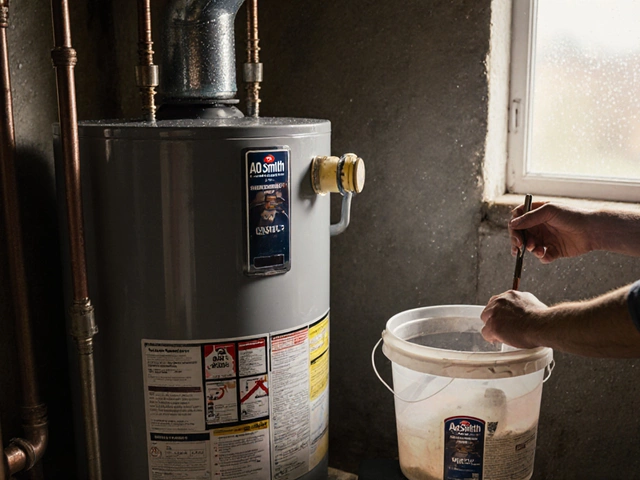Ever opened your oven only to find it staying cold? You’re not alone. A faulty element, a bad thermostat, or a loose connection can turn a simple bake into a frustration. Below we break down the top reasons ovens fail, easy DIY steps, and the signs that you need a professional.
The first thing to check is whether the oven even gets power. Look at the circuit breaker and the oven’s plug – a tripped breaker or a loose plug is the simplest fix. If power is fine, the heating element is usually the culprit. A burned‑out element will look blackened or have visible cracks. You can test it with a multimeter; zero resistance means it’s still good, anything else and it’s time for a replacement.
1. Thermostat or temperature sensor – A faulty sensor can trick the oven into thinking it’s already hot. Feel the oven’s interior after a short run; if it’s warm but the display still shows low, the sensor might need swapping.
2. Control board – Modern ovens use electronic boards to manage heat. If the display flickers or shows error codes, look up the code in your manual. Often a reset (turning the oven off for a few minutes) clears minor glitches.
3. Door latch – Ovens won’t heat if the door isn’t sealed properly. Check the latch for wear or debris that may keep it from closing fully.
If any of these checks point to a broken part, you can usually order the replacement online. For example, our post “How to Replace an Oven Element Yourself” walks you through removing the rear panel, disconnecting the wires, and installing a new element in under an hour.
When DIY isn’t safe – like dealing with gas‑ignition ovens or complex electronic boards – call a qualified technician. Working with electricity can be dangerous, and a pro will test the oven’s internal circuitry to avoid further damage.
Regular maintenance can stop many faults before they start. Clean the oven’s interior after each use, keep the heating element free of food splatter, and run a self‑clean cycle every few months if your model has one. Also, schedule a yearly check‑up with a local service like Bognor Regis Appliance Repair Experts to keep everything running smoothly.
Bottom line: most electric oven faults boil down to three things – power issues, faulty heating elements, or sensor problems. A quick visual inspection, a multimeter test, and a little patience can solve 70% of cases. For the rest, a professional can diagnose and replace the problematic component, saving you time and avoiding costly mistakes.
Got an oven that won’t heat? Try the steps above, and if you’re still stuck, reach out to a trusted Bognor Regis repair service. A fast, reliable fix is just a phone call away.

Electric ovens are handy, but they're not immune to problems. This article breaks down the most common faults people face, from ovens not heating properly to strange noises and error codes. You’ll get real tips on troubleshooting and signs when it’s time to call in the pros. Save time (and maybe some frustration) by knowing what to look out for. Find out why your oven might let you down and how to deal with it.

Extractor fans are a lifesaver when it comes to clearing out steam, smoke, and nasty odors, but many people forget they actually need a little love now and then. This article cracks open the question of whether extractor fans need maintenance, and if so, what kind and how often. We'll cover quick tips, warning signs, and busted myths around fan care. Get the straightforward facts (and a few surprises) about keeping your fan working its best. No nonsense, just super practical info you can use right now.

When your electric hob stops working, it's more than just a minor inconvenience—cooking essentials go awry, family meal plans are disrupted. Understanding some common causes and fixes is crucial before calling in the big guns or rushing to buy a new unit. From circuit issues, faulty sensors, and even user errors, many problems have straightforward solutions. This guide walks you through troubleshooting steps and shares tips to keep your hob cooking strong.

Replacing an old boiler might seem like a hassle, but when it's reaching the 15-year mark, the decision becomes crucial for efficiency and safety. This article explores whether it's time to upgrade, balancing costs, savings, and the impact on your home. From understanding energy efficiency to recognizing warning signs, we dive into everything you need to consider. With insights and practical tips, make an informed choice about your old boiler.

AO Smith, Bradford White, and Rheem are the most durable water heater brands, often lasting 12-15 years with proper maintenance. Learn what really affects lifespan and how to make your heater last longer.

Deciding between repairing and replacing a freezer can be tricky. This article guides you through evaluating repair costs, expected lifespan, and energy efficiency before making a decision. It provides practical advice to help you make an economical choice, whether to fix or replace your freezer. Learn important factors to consider, like repair frequency and environmental impact, to ensure you spend wisely.